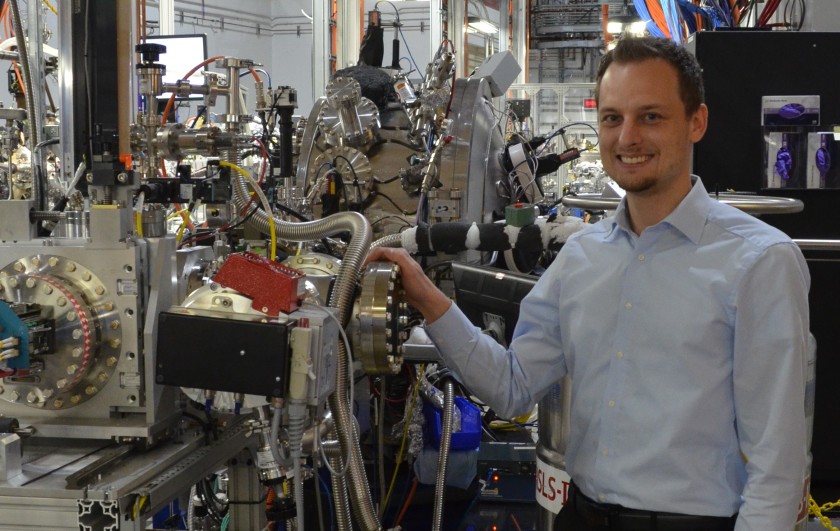New Helmholtz Young Investigator Group at HZB

Felix Büttner has set up a holography chamber at Brookhaven National Laboratory. © privat
Dr. Felix Büttner will establish a Helmholtz Young Investigator Group (YIG) on topological solitons at the HZB beginning in March 2020. Topological solitons occur in magnetic quantum materials and can contribute to extremely energy-efficient switching processes. Büttner wants to develop a new imaging technique at BESSY II to study these quasi-particles.
Dr. Felix Büttner has received funding from the Helmholtz Association following a tough selection process. He will now build up his own research group, a Helmholtz Young Investigator Group (YIG).
Until now, he was doing research as a postdoc at the Massachusetts Institute of Technology in Cambridge, MA, USA. Büttner has already distinguished himself with numerous publications in the field of magnetic quantum materials.
At the HZB, he wants to develop a new high-resolution technique at the BESSY II synchrotron source that will enable the imaging of complex magnetic structures under realistic conditions at room temperature.
He will focus on antiferromagnetic topological solitons that occur in certain materials and are considered important candidates for extremely energy-efficient data storage. “There has been little progress in antiferromagnetic soliton research so far due to a lack of high-resolution imaging techniques that can detect antiferromagnetic topological solitons in actual devices”, Büttner explains and adds: “The HZB offers high-tech facilities and expertise in all these areas, making it the perfect place for this ambitious project.”
arö
https://www.helmholtz-berlin.de/pubbin/news_seite?nid=21125;sprache=en
- Copy link
-
Ernst Eckhard Koch Prize and Innovation Award on Synchrotron Radiation 2025
At the 27th BESSY@HZB User Meeting, the Friends of HZB honoured the dissertation of Dr Enggar Pramanto Wibowo (Friedrich-Alexander University Erlangen-Nuremberg). The Innovation Award on Synchrotron Radiation 2025 went to Prof. Tim Salditt (Georg-August-University Göttingen) and Professors Danny D. Jonigk and Maximilian Ackermann (both, University Hospital of RWTH Aachen University).
-
Synchrotron radiation sources: toolboxes for quantum technologies
Synchrotron radiation sources generate highly brilliant light pulses, ranging from infrared to hard X-rays, which can be used to gain deep insights into complex materials. An international team has now published an overview on synchrotron methods for the further development of quantum materials and technologies in the journal Advanced Functional Materials: Using concrete examples, they show how these unique tools can help to unlock the potential of quantum technologies such as quantum computing, overcome production barriers and pave the way for future breakthroughs.
-
Peat as a sustainable precursor for fuel cell catalyst materials
Iron-nitrogen-carbon catalysts have the potential to replace the more expensive platinum catalysts currently used in fuel cells. This is shown by a study conducted by researchers from the Helmholtz-Zentrum Berlin (HZB), Physikalisch-Technische Bundesanstalt (PTB) and universities in Tartu and Tallinn, Estonia. At BESSY II, the team observed the formation of complex microstructures within various samples. They then analysed which structural parameters were particularly important for fostering the preferred electrochemical reactions. The raw material for such catalysts is well decomposed peat.
